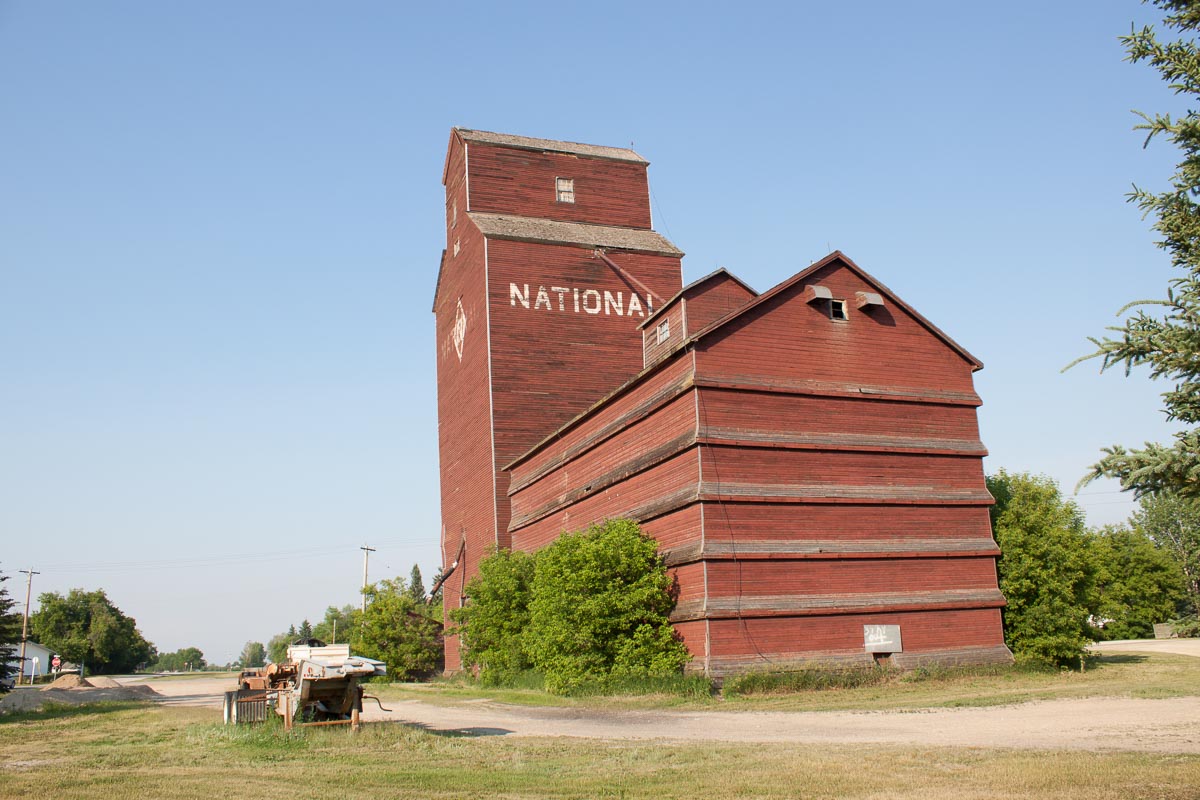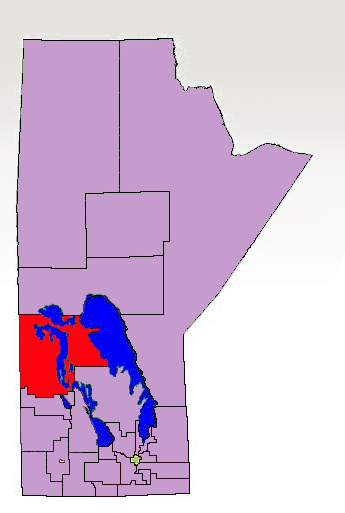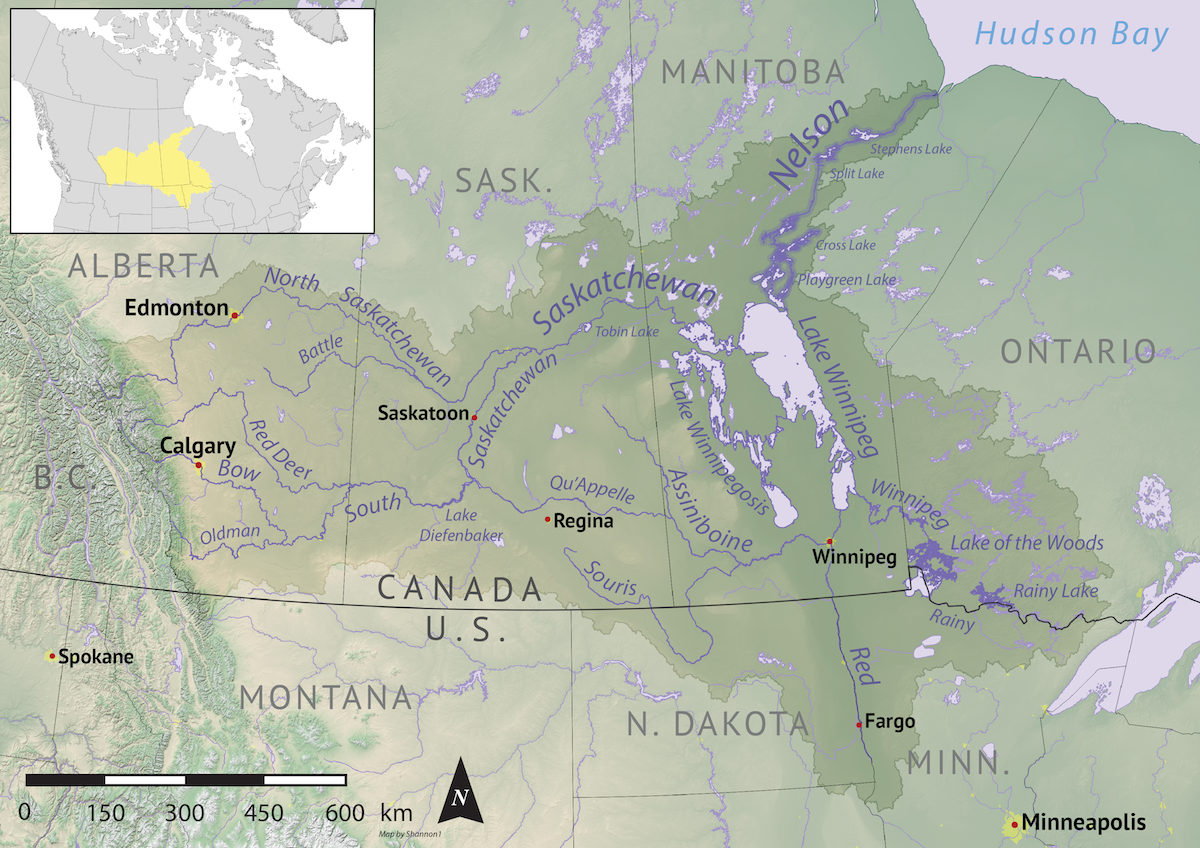|
Winnipegosis
Winnipegosis is an unincorporated urban community in the Rural Municipality of Mossey River, Manitoba, Canada. It lies at the mouth of the Mossey River on Lake Winnipegosis The community was once categorized as a village, but this status was relinquished on 1 January 2015 upon its amalgamation with the RM of Mossey River. History The lake name ''Winnipegosis'', which has evolved through different spellings, came from the Cree word meaning 'Little Muddy Water', a diminutive of Winnipeg, which means 'Muddy Water'. Mossey River was spelled "Mossy" prior to 1900. Demographics In the 2021 Census of Population conducted by Statistics Canada, Winnipegosis had a population of 945 living in 388 of its 481 total private dwellings, a change of from its 2016 population of 617. With a land area of , it had a population density of in 2021. Commerce The mouth of Mossey River was the site of the original Fort Dauphin fur trading post, constructed by the son of French explorer Pierre ... [...More Info...] [...Related Items...] OR: [Wikipedia] [Google] [Baidu] |
Lake Winnipegosis
Lake Winnipegosis is a large (5,370 km2) lake in central North America, in Manitoba, Canada, some 300 km northwest of Winnipeg. It is Canada's eleventh-largest lake. An alternate spelling, once common but now rare, is Lake Winipigoos or simply 'Lake Winipigis'. The lake's name derives from that of Lake Winnipeg, with a diminutive suffix. Winnipeg means 'big muddy waters' and Winnipegosis means 'little muddy waters'. It appears as Winipgassish on the Fidler map of 1820, while modern spelling dates from as early as 1811. Geography The elongated 195-kilometre-long lake is the second-largest of three large lakes in central Manitoba; the other two are Lake Winnipeg, the largest, and Lake Manitoba. All three lakes are on the floor of the prehistoric glacial Lake Agassiz (as are nearby Cedar Lake and the Lake of the Woods). The lake's watershed extends over some 49,825 km2 in Manitoba and Saskatchewan. It receives most of its waters from the Manitoba Escarpment. ... [...More Info...] [...Related Items...] OR: [Wikipedia] [Google] [Baidu] |
Rural Municipality Of Mossey River
The Rural Municipality of Mossey River is a rural municipality (RM) in the Parkland Region of Manitoba, Canada, located at the south end of Lake Winnipegosis. It is named for the Mossey River, a river that flows through the municipality. History The Rural Municipality of Mossey River was incorporated on May 1, 1906. On January 1, 2015, it amalgamated with the Village of Winnipegosis as dictated by '' The Municipal Amalgamations Act'', which required that municipalities with a population less than 1,000 amalgamate with one or more neighbouring municipalities by 2015.https://web2.gov.mb.ca/laws/regs/current/_pdf-regs.php?reg=27/2014 The Government of Manitoba initiated these amalgamations in order for municipalities to meet the 1997 minimum population requirement of 1,000 to incorporate a municipality. Communities * Fork River * Oak Brae * Volga * Winnipegosis Demographics In the 2021 Census of Population conducted by Statistics Canada Statistics Canada (StatCa ... [...More Info...] [...Related Items...] OR: [Wikipedia] [Google] [Baidu] |
Parkland Region
Parkland is an informal geographic List of regions of Manitoba, region of the Canada, Canadian Provinces and Territories of Canada, province of Manitoba, located between Lake Manitoba, Lakes Manitoba and Lake Winnipegosis, Winnipegosis on the east and the Manitoba–Saskatchewan border on the west. The largest population centre is the city of Dauphin, Manitoba, Dauphin, and the second largest is the town of Swan River, Manitoba, Swan River. Riding Mountain National Park, Duck Mountain Provincial Park (Manitoba), Duck Mountain Provincial Park, and Asessippi Provincial Park are also located in the region, as well as Manitoba's highest point, Baldy Mountain (Manitoba), Baldy Mountain. Together with the Westman Region to the south, Parkland composes the broader Prairie Mountain region, and is provided health services via Prairie Mountain Health. As of 2016, the Parkland region had a population of 43,787. Major communities Urban municipalities: * Dauphin, Manitoba, Dauphin (city) * S ... [...More Info...] [...Related Items...] OR: [Wikipedia] [Google] [Baidu] |
Swan River (electoral District)
Swan River is a provincial electoral division in the Canadian province of Manitoba. It was created in 1903, in what was then the northwestern corner of the province. Manitoba's borders expanded significantly in 1912, and Swan River is now located in the centre of the province, close to its western border with Saskatchewan. The division has seen several redistributions. The riding is bordered to the north by The Pas, to the south by Dauphin-Roblin, to the east by Lake Winnipeg and to the west by the province of Saskatchewan. Lake Winnipegosis runs through the riding. The community of Swan River is located in the riding's southwest corner. Other communities in the riding include Birch River, Ethelbert, Minitonas, Camperville and Winnipegosis. The riding's population in 1996 was 19,639. In 1999, the average family income was $35,209, and the unemployment rate was 10.70%. Twenty-eight per cent of the riding's residents are listed as low income, and over 25% of the popula ... [...More Info...] [...Related Items...] OR: [Wikipedia] [Google] [Baidu] |
Fort Dauphin (Manitoba)
Fort Dauphin, was built in 1741 near Winnipegosis, Manitoba with Pierre Gaultier de La Vérendrye, the western military commander, directing construction. The area provided a post located between the Assiniboine River and the Saskatchewan River. It was named for the Dauphin prince of France. A second Fort Dauphin was built in 1767 on the north shore of Lake Dauphin, so both the fort and the lake had the same name. This fort was built by French fur traders after the era of the western military commanders. As with many of the forts of the times, they kept the same names while changing locations to facilitate trade with the First Nations and to secure better physical locations. The site at Winnipegosis was designated a National Historic Site of Canada National Historic Sites of Canada (french: Lieux historiques nationaux du Canada) are places that have been designated by the federal Minister of the Environment on the advice of the Historic Sites and Monuments Board of Canada ... [...More Info...] [...Related Items...] OR: [Wikipedia] [Google] [Baidu] |
Manitoba Municipal Amalgamations, 2015
The 2015 municipal amalgamations in Manitoba was the result of new legislation (''Municipal Amalgamations Act'') in the province that required a minimum population threshold of 1,000 people in order to incorporate a municipality. To meet this new threshold, Manitoba's smaller municipalities—those with a population of less than 1,000—merged with one or more neighbouring municipalities by 2015. Background In 1997, the Government of Manitoba established a minimum population threshold of 1,000 in order to incorporate a municipality. As of the 2011 census, 93 of the 197 municipalities in Manitoba had populations less than 1,000. In 2012, the Manitoba government announced that municipalities would be required to amalgamate in order for them to meet the minimum population threshold and make them more sustainable communities moving forward. Soon after, ''The Municipal Amalgamations Act'' was enacted in 2013, requiring that municipalities with a population less than 1,000 amalgam ... [...More Info...] [...Related Items...] OR: [Wikipedia] [Google] [Baidu] |
Manitoba
Manitoba ( ) is a Provinces and territories of Canada, province of Canada at the Centre of Canada, longitudinal centre of the country. It is Canada's Population of Canada by province and territory, fifth-most populous province, with a population of 1,342,153 as of 2021, of widely varied landscape, from arctic tundra and the Hudson Bay coastline in the Northern Region, Manitoba, north to dense Boreal forest of Canada, boreal forest, large freshwater List of lakes of Manitoba, lakes, and prairie grassland in the central and Southern Manitoba, southern regions. Indigenous peoples in Canada, Indigenous peoples have inhabited what is now Manitoba for thousands of years. In the early 17th century, British and French North American fur trade, fur traders began arriving in the area and establishing settlements. The Kingdom of England secured control of the region in 1673 and created a territory named Rupert's Land, which was placed under the administration of the Hudson's Bay Company. Rupe ... [...More Info...] [...Related Items...] OR: [Wikipedia] [Google] [Baidu] |
List Of Villages In Manitoba
A village is an incorporated urban municipality in the Provinces and territories of Canada, Canadian province of Manitoba. Under the province's ''Municipal Act'' of 1997, a community must have a minimum population of 1,000 and a minimum density of 400 people per square kilometre to incorporate as an urban municipality. As an urban municipality, the community has the option to be named a village, town or urban municipality. It also has the option of being named a city once it has a minimum population of 7,500. Manitoba has two villages that have a cumulative population of 1,933 in the Canada 2016 census. There were several communities with village status prior to January 1, 2015, when most were eliminated through municipal amalgamations. St-Pierre-Jolys, which has a population of 1,170, is the only village surpassing the ''Municipal Act's'' 1,000-person threshold. Dunnottar, which has a population of 763, has been granted an exemption from the minimum population requirement. ... [...More Info...] [...Related Items...] OR: [Wikipedia] [Google] [Baidu] |
Pierre Gaultier De Varennes, Sieur De La Vérendrye
Pierre Gaultier de Varennes, sieur de La Vérendrye (17 November 1685 – 5 December 1749) was a French Canadian military officer, fur trader, and explorer. In the 1730s, he and his four sons explored the area west of Lake Superior and established trading posts there. They were part of a process that added Western Canada to the original New France territory that was centred along the Saint Lawrence basin. He was the first known European to reach present-day North Dakota and the upper Missouri River in the United States. In the 1740s, two of his sons crossed the prairie as far as present-day Wyoming, United States and were the first Europeans to see the Rocky Mountains north of New Mexico. Early life Born in Trois-Rivières, New France, Pierre was the eldest son of René Gaultier de Varennes, who came to Canada as a soldier in 1665, and Marie, the daughter of Pierre Boucher, the first Governor of Trois-Rivières. The Gaultier family were minor nobility or landowners ... [...More Info...] [...Related Items...] OR: [Wikipedia] [Google] [Baidu] |
Statistics Canada
Statistics Canada (StatCan; french: Statistique Canada), formed in 1971, is the agency of the Government of Canada commissioned with producing statistics to help better understand Canada, its population, resources, economy, society, and culture. It is headquartered in Ottawa.Statistics Canada, 150 Tunney's Pasture Driveway Ottawa, Ontario K1A 0T6; Statistique Canada 150, promenade du pré Tunney Ottawa, Ontario K1A 0T6 The agency is led by the chief statistician of Canada, currently Anil Arora, who assumed the role on September 19, 2016. StatCan is responsible to Parliament through the Minister of Innovation, Science and Industry, currently François-Philippe Champagne. Statistics Canada acts as the national statistical agency for Canada, and Statistics Canada produces statistics for all the provinces as well as the federal government. In addition to conducting about 350 active surveys on virtually all aspects of Canadian life, the '' Statistics Act'' mandates that Statistic ... [...More Info...] [...Related Items...] OR: [Wikipedia] [Google] [Baidu] |
North American Central Time Zone
The North American Central Time Zone (CT) is a time zone in parts of Canada, the United States, Mexico, Central America, some Caribbean Islands, and part of the Eastern Pacific Ocean. Central Standard Time (CST) is six hours behind Coordinated Universal Time (UTC). During summer, most of the zone uses daylight saving time (DST), and changes to Central Daylight Time (CDT) which is five hours behind UTC. The largest city in the Central Time Zone is Mexico City; the Mexico City metropolitan area is the largest metropolitan area in the zone and in North America. Regions using (North American) Central Time Canada The province of Manitoba is the only province or territory in Canada that observes Central Time in all areas. The following Canadian provinces and territories observe Central Time in the areas noted, while their other areas observe Eastern Time: * Nunavut (territory): western areas (most of Kivalliq Region and part of Qikiqtaaluk Region) * Ontario (province): a port ... [...More Info...] [...Related Items...] OR: [Wikipedia] [Google] [Baidu] |
Hudson's Bay Company
The Hudson's Bay Company (HBC; french: Compagnie de la Baie d'Hudson) is a Canadian retail business group. A fur trading business for much of its existence, HBC now owns and operates retail stores in Canada. The company's namesake business division is Hudson's Bay, commonly referred to as The Bay ( in French). After incorporation by English royal charter in 1670, the company functioned as the ''de facto'' government in parts of North America for nearly 200 years until the HBC sold the land it owned (the entire Hudson Bay drainage basin, known as Rupert's Land) to Canada in 1869 as part of the Deed of Surrender, authorized by the Rupert's Land Act 1868. At its peak, the company controlled the fur trade throughout much of the English- and later British-controlled North America. By the mid-19th century, the company evolved into a mercantile business selling a wide variety of products from furs to fine homeware in a small number of sales shops (as opposed to trading posts) acros ... [...More Info...] [...Related Items...] OR: [Wikipedia] [Google] [Baidu] |





